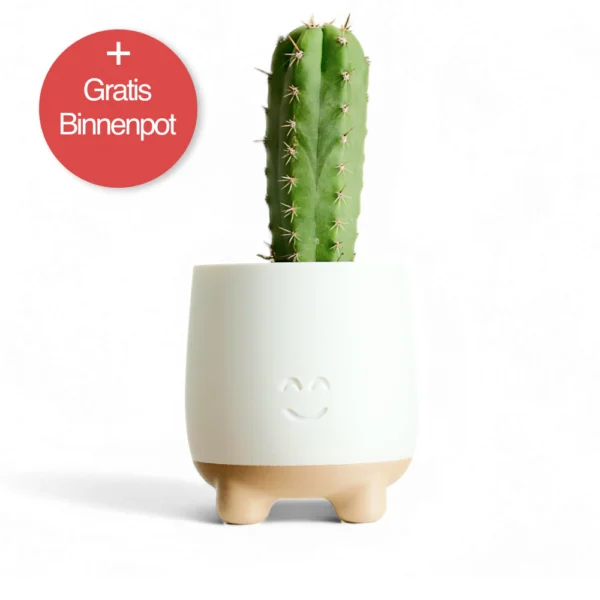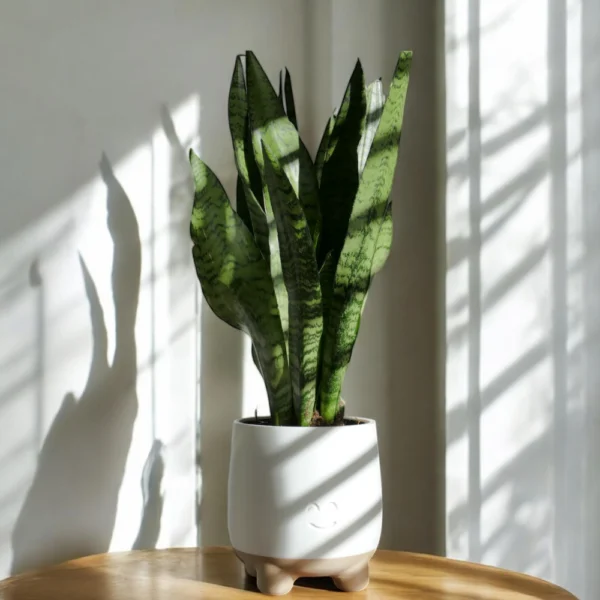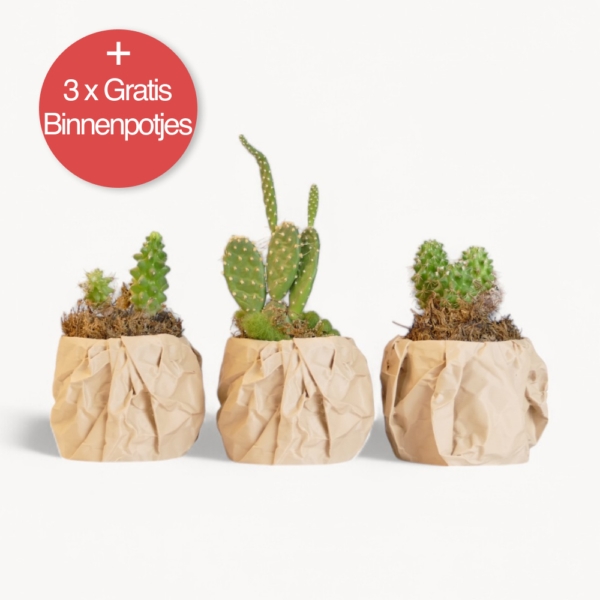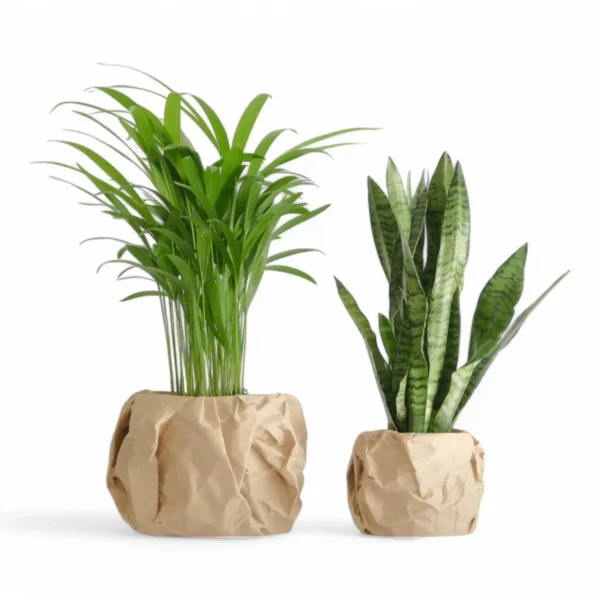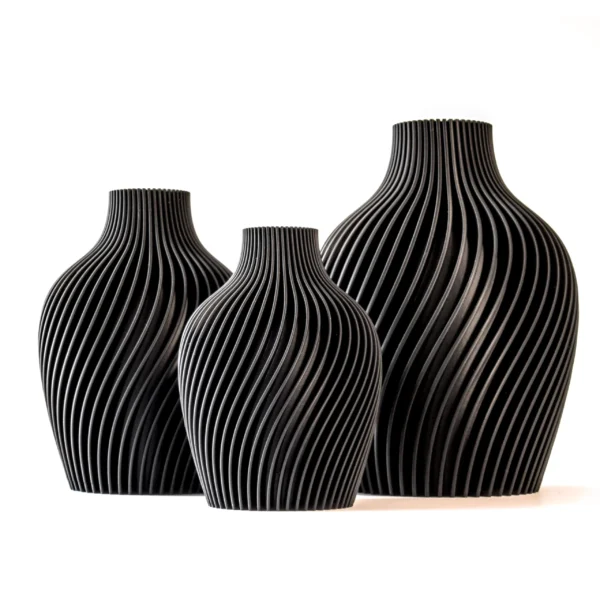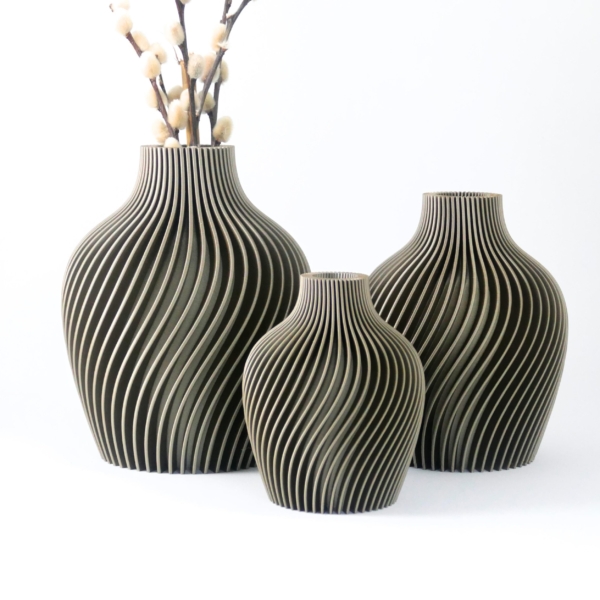Ocel Design’s self-watering plant pot is designed to give your plants the perfect amount of water without constant supervision. With an easy-to-fill reservoir and user-friendly design, our self-watering pot makes taking care of your plants effortless and efficient. This guide will help you get the most out of your new plant pot and ensure your plants stay healthy and lush for years to come.
Getting your self-watering plant pot up and running is easy, but requires a few specific steps to ensure optimal results. By carefully following these instructions, you will create the ideal environment for your plants to flourish with minimal effort on your part.
1. Unpack the self-watering jar.
2. Add the included hydro pellets to the soil.
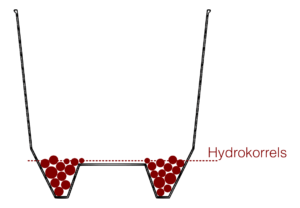
After unwrapping the inner pot, add the included hydro pellets to the bottom of the pot. These clay granules play a crucial role in the self-watering system by transporting water upward and slowly releasing it to the plant’s roots. The hydro grains also improve air circulation around the roots, which is essential for healthy plant growth and preventing root rot 3.
3. Place your plant
You can now place your favorite plant in the inner pot. You have several options here for the planting medium:
- Original potting soil.
You can just keep using your plant’s original potting soil, which is the least stressful for the plant. - Own potting soil.
Always use specific potting soil for houseplants, as it contains the proper structure and nutrients for plants kept indoors. - Hydro pellets
They improve drainage and air circulation for roots, which reduces the risk of root rot and enables efficient water use. Moreover, hydrobeads are reusable, making them a sustainable and environmentally friendly.
4. Remove the sticker over the water indicator.
An important part of your self-watering pot is the water indicator. This handy feature helps you monitor the water level in the reservoir. Before you start using the pot, remove the protective sticker from the water indicator. This allows the indicator to move freely and accurately display the water level during filling and use.
5. Fill the reservoir with lukewarm water

Now it is time to fill the reservoir for the first time. To do this, use lukewarm water, which is better for your plants than cold water because it has less shock effect on the roots. Slowly pour the water into the reservoir and keep an eye on the water indicator. The indicator will gradually move up as the water level rises. Stop filling once the water indicator reaches the highest position, indicating that the reservoir is fully filled.
If the indicator seems to stick, make sure there is no dirt in the hole of the water indicator. Should there be some dirt/potting soil in there, carefully remove the water indicator from the hole and pour some water through the hole, this usually washes away all the dirt.
6. Tips for when it’s time to refill the reservoir
Too much or too little water can cause stress and even lead to plant diseases. With the following tips, you can easily meet the water needs of your plants:
- For most houseplants in a self-watering pot, it is sufficient to fully refill the reservoir once a month. This frequency provides a good balance, with the plant receiving sufficient water without risk of overhydration.
- It is advisable to mark a fixed day in your calendar for this task, such as the first day of each month, to ensure a consistent water supply.
- Before refilling, always check that the reservoir is actually (almost) empty. The water indicator will be in the lowest position when the reservoir is empty. It is important not to refill just because time has passed; some plants use water more slowly than others, especially during periods with less light or lower temperatures.
- Not all plants have the same water needs. Succulents and cacti store water in their leaves or stems and require much less frequent watering. For these plants, we recommend refilling the reservoir every 2 months. Excessive water can be harmful to these plants and lead to root rot 5.
- If your plant’s leaves are turning brown or yellow, it could be a sign of over- or under-watering. If you refill the reservoir regularly and the soil is not dry, the plant has most likely been overwatered. Water the plant less in the future. We recommend the following guide to save the plant:
Maxvandaag.co.uk This is how to save a houseplant that has been overwateredIn case of under watering, we recommend refilling the reservoir more frequently….
7. Enjoy your plants!
Your self-watering plant pot offers an efficient and easy-to-use way to keep your plants in optimal condition with minimal effort. Self-watering plant pot allows you to enjoy healthy, lush plants without the constant care that traditional pots require.
Seller
Prikkie Genot – Tandenstoker en Cocktailprikker Dispenser
Konijn WILLOW
Sources:
https://www.gardenersworldmagazine.nl/groene-school/kamerplanten/kamerplant-te-veel-water-gegeven/
https://www.mamabotanica.nl/blog/beste-manier-om-je-planten-water-te-geven
https://www.eurofleur.nl/nieuws/324/zelf-aan-de-slag-met-hydroponie
https://doika.nl/blogs/news/hoe-werkt-een-bloempot-met-waterreservoir
https://www.elho.com/nl/producten/self-watering-insert/self-watering-insert-17cm-living-black/
https://deduurzametuin.nl/winkel/tuin/testers/plant-thirsty-light/
https://www.elho.com/nl/faq/productvragen/gebruik/self-watering-insert-hoe-gebruik-ik-die/
https://www.fleurdirect.nl/plantengids/onderhoud/watergeven/watermeters/
https://www.zambeza.nl/blog-hoe-los-je-onder-en-overbewatering-bij-cannabis-op-n361
https://ecostyle.nl/blogs/inspiratie/zelf-plantenvoeding-maken
https://cvprobleemkwijt.nl/cv-ketel/bijvullen/zelf-bijvullen
https://madebyowi.nl/blog/de-kunst-van-het-besproeien-van-kamerplanten/
https://www.mooiwatplantendoen.nl/op-vakantie-met-deze-slimme-tips-krijgen-je-planten-genoeg-water
https://www.smartcv.nl/wanneer-moet-ik-mijn-cv-ketel-bijvullen/
https://www.pokon.nl/tips/wat-te-doen-bij-gele-bladeren-bij-je-kamerplant/
https://www.garden-id.com/nl/blog/tuiniersgeheimen-6/waterreservepotten-gebruiksaanwijzing-16
https://www.lechuza.nl/hoe-gebruik-ik-lechuza/sp-planting.html
https://www.fleurdirect.nl/bloempotten/type/zelf-watergevende-bloempotten/






